This study deals with the life and legacy of Erenak bek, who was a prominent Kyrgyz personality lead of a Siberian Kyrgyz circa the 17th century. Erenak bek is the third son of eminent Kyrgyz ruler İshşey Mergen, grandson of Nomchu bek who ruled the Altısar tribe which was a part of Kyrgyz state along the Yenisey River. According to the old written records, he descended from noble Kyrgyz lineage. Obviously, Erenak bek is united the Siberian Kyrgyz in the second period of the 17th century. Therefore, it could be said that Erenak bek, gathered together the Kyrgyz and their Kyshtyms (depended tribes) under one authority with the political support of Dzungar Khan Senge-Taysha and his successor Galdan Boşoktu Khan. Together, they conducted some effective operations against Russians envasion into Siberia and took some advantages from them.
«Erenak a wonderful person, a man of outstanding energy and a broad initiative.» Prof. N. N. Kozmin.
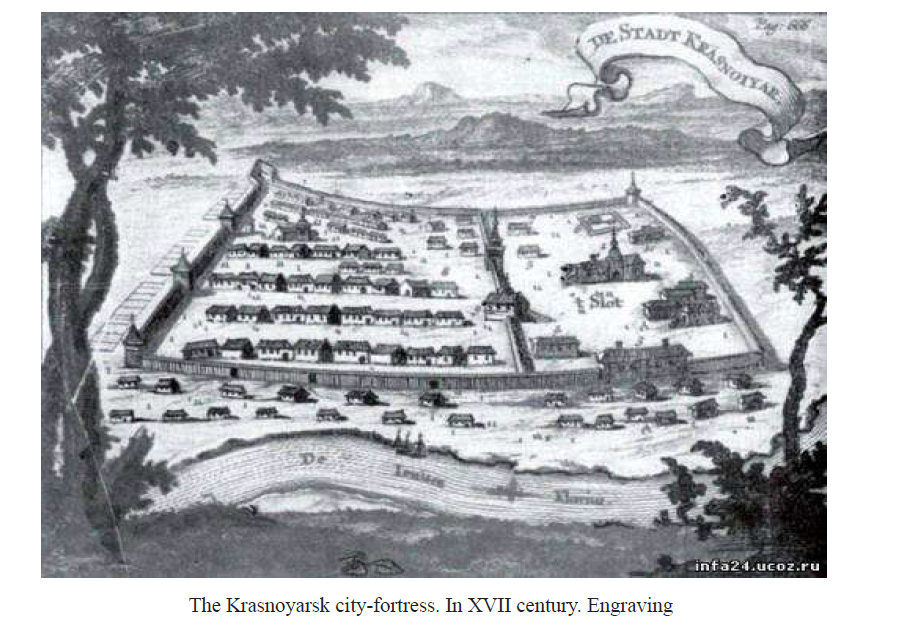
Erenak be was the third son of the famous Kyrgyz prince Ishaia, the grandson of Nomcha, the leader of the genus Altysar (17th century), the state of the Yenisei Kyrgyz. The leader of the Kyrgyz is known for the fact that in Southern Siberia (Minusinsk Basin) in the second half of the XVII century gathered the scattered Kyrgyz tribes and their Kyshtym, thus establishing the «state of the Kyrgyz» or as mentioned in Russian written sources « the land of Kyrgyz». Erenak’s father, the great prince Ishey-Mergen, was also known for his struggle against the Russian conquerors who were about to attack» the land of Kyrgyz». The birth date and birthplace of Erenak bek are not known but there is widespread data that he originated from a noble family and received education in Dzungaria. He wrote the letters to the Russians (Krasnoyarsk, Kuznetsk, Tomsk) in the Oirot-Kalmyk language and died in the battle with Khalkha Mongols (Altan khans) in September 1687. It is believed that Erenak bek has been educated within the Dzungarian Khan household since the Kyrgyz princes had matrimonial and kindred relationships with the founders of the Dzungarian state from the khan’s clan «choros» («tsoros»).
According to the written sources, he was known under the names of Irenek Isheev, Irenek, «Kirghiz prince Erenak the son of Ishaiah». It is also known that his elder brother, Yuruktu, was held hostage (amanat) under the king in Moscow (Romanov dynasty, 1612-1917), then he was baptized there and received a new name – Ivan. Yuruktu (Ivan) participated in campaigns against Krasnoyarsk against his brother Erenak (Butanaev., Butanaeva 2003:176). Erenak bek had five sons – Chakun, Khargin (Kargyn), Sham, Korchun, Chogun. One of Korchun’s sons, after the death of Erenak bey’s father on the battlefield, took over the reins of the Yenisei Kyrgyz in their own hands, and in 1692-1694, 1698-1700 attacked the Russian prison (Krasnoyarsk – Kyzyl-Zhar, Tomsk, Kuznetsk, Yeniseisk). In 1703 he led the forced relocation of the Yenisei Kyrgyz to Dhungaria (see: Boronin 2009, Part 2.-p. 55).
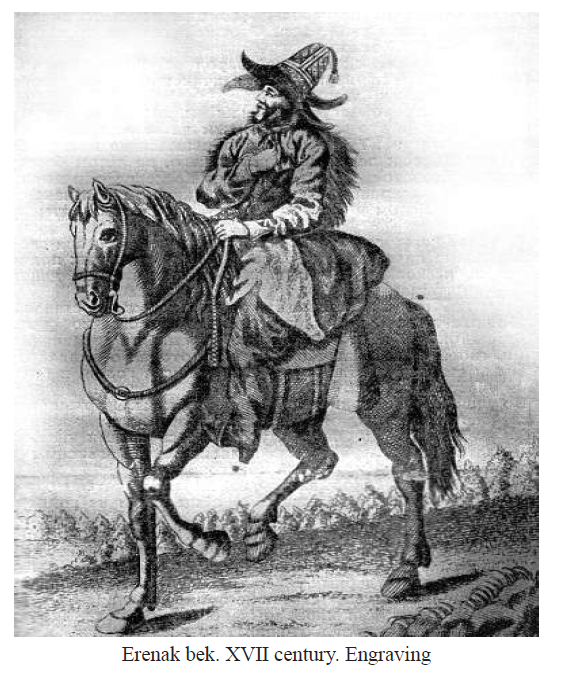
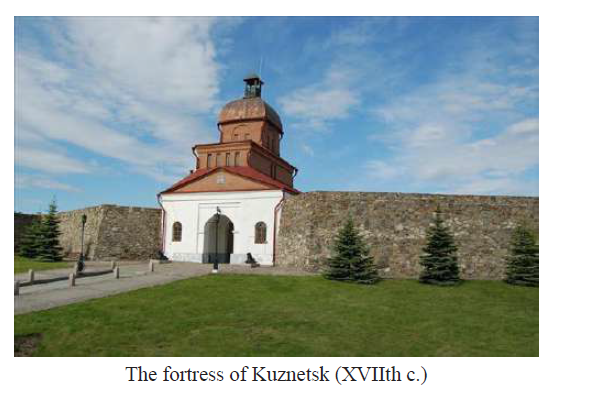
The leader of the Siberian (Yenisei) Kyrgyz, Erenak bek, consolidated the disconnected Kyrgyz and their kyshtym into one state and based on the new situation in Central Asia (including in southern Siberia), Erenak bek gained military and political support from the Dzungar Khan of the Sengetaisha (about 1630-1671), and later his successor Galdan-Boshoktu Khan (1644-1697) under his lead, «Kyrgyz land» (Kyrgyz state) or Siberian Kyrgyz became important military and political associates of the Zhungar Khanate.
One of Erenak’s main goals was to prevent Russian colonization in Southern Siberia. He achieved this goal, with a martial hand. Erenak bek joined the divided Kyrgyz uluses and Kishtym tracts around the political center «Kyrgyz land» or «Kyrgyz state». At that time, it was difficult to differentiate real border between the Kyrgyz ulus «state Kyrgyz» and the new northern neighbor the Moscow state. Erenak bek zealously defended the boundaries of his Kishtym tracts, which were the source of the economic power of the Kyrgyz kings (beks). He tried to gather all the Kyrgyz race into a single khanate, he was fighting to save his own power and for the independence of Kyrgyz princes from the Russian state, while gravitating toward an alliance with the Dzungar Khanate (Butanaev, Butanaeva 2003:165). Prince Erenak bek was a cruel and treacherous ruler. He did not spare the traitors and tortured them without remorse: crucified in the trees, boiled in hot water boilers etc.
In the summer of 1666, a year before the defeat of the Altan Khan state by the Dzungars, he crossed the Yenisei river with a detachment of 300 men and began a war against the Kyshtyms who had accepted citizenship of the Moscow State, captured the Udinsk burg from the Russians. On the way back the Kyrgyzs were caught up with the soldier Elisei Tyumentsev with 100 men on the ships. September 2, 1666, on the Ishta River Yule Erenak bek defeated and, left the cannons,-horses and captives and he saved his life by retreating battlefield. At the same year, the Krasnoyarsk general G.P. Nikitin sent ‘ambassadors to Kyrgyz». Erenak’s brother Aikan Isheev told the Russian ambassadors that the Kyrgyz paid a contribution to the Kalmyk (Dzhungar) khan of Senge-taisha. During those meetings, Erenak, regularly jumped up and scolded the Cossacks in rude words. In 1665, the Russian embassy, led by Roman Starkov and Stepan Bobarykin (Abdykalykov 1968:101), in their way from Tomsk to Altan khan, was hostilely greeted in the Erenak bek district, as according to earlier agreements, the Russians had not provided Kyrgyz people with the promised military assistance against the western Mongols (Altan khans). During that meeting, the ambassador of the Moscow State Roman Starkov asked Altan Khan Lojan to extradite Erenak bek to the Russians.
Erenak bek. XVII century. Engraving
The fortress of Kuznetsk (XVIIth c.)
In May 1667, Erenak bek, along with the dzungars, makes a march to Krasnoyarsk (KyzylJar). Russian military governors knew about the preparations for the campaign and prepared for the defense. On May 13, the siege of the city began. Krasnoyarsk lost 125 people from the garrison, 48 volunteers, 17 suburban Tatars and nine people from the auxiliary detachment sent from Yeniseysk. The surrounding villages were completely burned, horses and cattle were driven away, but the Kyrgyz were not able to take the fortified fortress. The Dzungars and Kyrgyz agreed to lift the siege on the condition of exchange of hostages. At September of the same year (i.e. 1667), Erenak bek repeated the raid on the Krasnoyars, town (Kyrgyz KyzylZhar). August 15, 1668, ambassador Matvey Rzhitsky travelled from Tomsk to the Dzungarian khan, who had unsuccessfully expressed a protest about the actions of the Kyrgyz prince Erenak bek (Boronin 2002:58). In the spring of 1669 Erenak bek tried to settle relations with the Russian authorities. The Kyrgyz caught the Krasnoyarsk collectors of yasak, tribute)and brought them to Erenak (Kozmin 1925:49). He let them go and asked to convey to the Krasnoyarsk governor a message that he did not want a war and wanted to put up. Together with them, Erenak bek sent his representative to conclude peace. The Krasnoyarsk General-governers decided to find out the intentions of Erenak bek and sent to him Ambassador Yakov Zyryan. But the negotiations did not take place, because, «Djungarian governor Kilichin Koshioci came to the Kyrgyz» and Erenak bek did not want to negotiate with the Russians before Koshioci’s eyes. Such a policy was later repeated under the reign of Tsevan Rabdane (16971726) (see: Boronin, OV, Dvordanism in Siberia in the 17th-60th, in the 19th century-Barnaul, 2002, -220 pp.).
In 1670, Erenak bek began a preparation for a new campaign. He wanted to take back his former Kyshtyms from the Russians by force. His own strength was not enough, so in the autumn he and the Tubin prince Talai Ilikov, went to the Dzungarian khan to ask for military support. However, because of the change of power in the Dzungarian throne, the campaign did not take a place. In 1671, Erenak bek again demanded the Kachins’ and Arinians’ yasak (tribute) from the Krasnoyarsk governor and now he did it on behalf of Galdan Bosoktu khan. July 26, 1671, Krasnoyarians complainted or bowed a low to the Moscow sovereign and asked: «to put down the Kirghiz and Tubans by war and build a town on their land». Erenak bek did not give up the idea of winning back his kyshtym nation from the Russians. At his request, the Dzungarian (Kalmyk) troops arrive to help him (Butanaev, Butanaeva 2001: 87). October 9, 1672, the general A. I. Sumarokov suggested that the Kyrgyz should become citizens of the Moscow state and give the oath of allegiance to contractual relations. Erenak bek took an irreconcilable position and refused to the oath, and he continued demanding yasak from the Kachins and Arinians for the Jungarian huntajah Galdan Tseren and threatened by war if they refused. In September 1673 the Kyrgyz-Dzungarian troops marched in two directions. One unit led by Erenak bek and the Dzhungar taiji Dolzhin on September 15 went to the Kuznetsk fortress. The second detachment under the command of Prince Altysar Prince Shanda Senchikenev appeared on September 20 near Tomsk, then in the Yenisei Uyezd. In 1675 on the island of Karagas (Pine), slightly below the mouth of the Abakan River, the Russians built a town. Erenak bek twice stormed the fortress, tried to set it on fire, but without success. In the same year, Erenak bek was besieged the newly-built Guard town for three days, but the Cossacks, led by Pentecostal Osip Mezenin, defended the town. In the autumn of 1675, Erenak bek and other Kyrgyz princes were summoned to Dzungaria. They stayed there about a year. In 1676 Erenak bek was also summoned to Dzungaria, headquarter of the Dzungarian Khan. In September 1677, the new Krasnoyarsk general D.G. Zagryazhsky again invited the Kyrgyz to «bow low to the Sovereign» and accept Russian citizenship. All proposals were rejected (Abdykalykov 1968:103). However, in October 1677, Erenak bek sent representatives to Tomsk and Krasnoyarsk by asking «to take them under the tsar’s hand to eternal servility» and asked them to send ataman Rodion Koltsov with servicemen to give the oath to the sovereign. Negotiations went wrong and resumed. In Krasnoyarsk, the text of the sworn record was compiled, in which unilateral commitments were imposed on the Kyrgyz. However, peace talks went by not the scenario developed in Krasnoyarsk. The initiative was taken by Erenak bek (Boronin 2002:58).
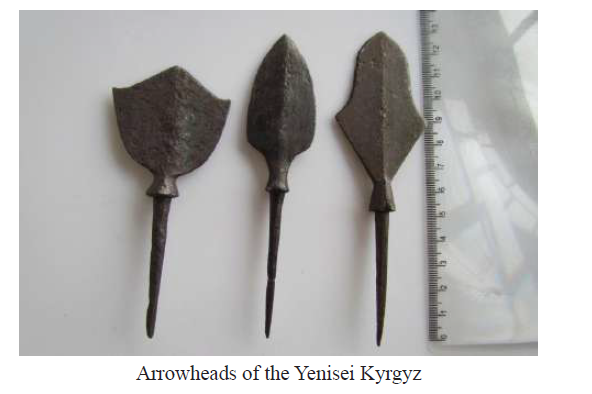
He achieved the advantage that both contracting parties made certain commitments. One of the clauses of the treaty was a mutual obligation to extradite fugitives. Both sides pledged not to go to war on each other. The Kyrgyz swore allegiance to the sovereign at the same Toochak River, where, in 1642, the father of Erenak, Prince Isha swore in, on behalf of uluses, Altysar, Yezersk, Tubin, and Motor’s the best two princes from each race had been swearing in (Kozmin 1925:49; Butanaev, Butanaeva 2001:89).
With Rodion Koltsov, Erenak bek sent a letter in the Mongolian language to the Russian Tsar’s name. In the letter, Irenek blamed the Russians themselves in the war. He then briefly outlined the contents of the concluded treaty, where he only mentioned the mutual obligations of the parties. Erenak bek completely ignored the payment of yasak (tribute) and the construction of the town, which the Russians so eagerly solicited. Thus, Erenak bek acted as a skillful diplomat and achieved great success. A wellknown scientist S.V. Bakhrushin noted: «We must recognize the treaty of 1678 as a major diplomatic victory of the Kirghiz prince. He succeeded, thanks to the military support of the Dzungars, to achieve the conditions on which his father and uncle insisted in 1627, the recognition of allied relations, instead of the yasak «(Bakhrushin CB Essays on the history of the Krasnoyarsk district in the 17th century. // Scientific Works. 1959. T. IV)
In June 1678 Erenak-bek sent his envoy to Tomsk and in the same year again went to Dzungaria. However, the peace established in 1678 was fragile. The Moscow authorities were not satisfied with the fact that they could not get Erenak-bek’s consent for the construction of the town. In January 1679, the Russian Emperor again pointed out to lay a town in the Tubin land, where it is convenient to «take the military parish». The Siberian authorities began to prepare for a large march by the joint forces of Tomsk, Krasnoyarsk, Yeniseisk and Kuznetsk. The march was headed by the Tomsk boyar son Roman Starkov, and the order for their offensives came from Moscow to Tomsk in early June 1679. Tomsk general Lvov appointed a campaign for August 10 (Abdykalykov 1968:105). But, in this situation, Erenak bek outstripped the Russians. Unexpectedly, on July 15, 1679, «Kirghiz and Altyrka, Yezersk military men, and Kizil Tatars appeared» unknown to the exile. «The Kyrgyz burned two villages under the city, struck servicemen and peasants in it, and their wives and children were taken the prisoner, and the cattle were driven away. In the «Kyrgyz» Kachin, Arin, Yastyn and Bokhtin Yasak Tatars with their wives and children were taken away (altogether 171 people). Erenak bek tried to take the town; the battle lasted three days «without interruption» but did not achieve successfully, the Kyrgyz left for their place. Erenak bek did not accomplish the plans of the Siberian governor (Kozmin 1925:52-53). The campaign, scheduled for August 1679, did not take place. S. Zagryazhsky, without the help of Tomsk and Yeniseisk, did not dare send servicemen in pursuit of Erenak. At that moment, Erenak bek tried to consolidate the success. He gathered a large army of Kyrgyz, Altir, Tubans, Motor Tatars, Baikots, Arins, Kachinians and other Kyshtym, and launched a new campaign against Krasnoyarsk. This time the city was not taken by surprise. In September 1679, Erenak bek laid out Krasnoyarsk on both sides of the Yenisei, the neighborhood was devastated, burned 16 villages, and in them 143 houses, and he tried to take the town by assault. September 14, the whole day the battle continued. To save the city, the garrison went to extreme measures. The servants brought out the «amanats» and their cooks – only seven people, and, in front of the attackers, they hanged them (Abdykalykov 1968:105). The exiled colonel Vasily Mnogogreshny (brother of the Ukrainian hetman Demyan Mnogogreshny, exiled to Selenginsk) was released from prison and was instructed to command the garrison. Despite the encirclement and difficult circumstances, the Cossacks made a sortie and entered the battle in the open field. In the battle, Erenak bek, who had been knocked out of the saddle, nearly died. The Kyrgyz could not resist the fire of artillery, which was directed by V. Mnogosheshny, and retreated. Pursued by Krasnoyarsk servicemen, Erenak-bek escaped by driving away with him almost all the yasak people from Krasnoyarsk (Bakhrushin 1950:45).
Beginning of 1680, in fulfillment of the royal decree and in response to the Kyrgyz raids, the Siberian governors organized a large expedition led by Roman Starkov. Irenek for a long time maneuvered, getting the enemy exhausted. February 9, Dzungar Barchikai as an intermediary three times came to make an arrangement with Russians. A truce was announced. Barchikaya was seen off with honor, and the Kyrgyz accompanying him, remained in the Russian position during the truce and one of them, unarmed Kyrgyz envoy, was killed. Learning that, Erenak bek backed with his people off (Butanaev., Butanaeva 2002:178).
On February 10, 1680, the servicemen again went to the Kyrgyz. Then Erenak bek asked for peace again. During the difficult negotiations, Erenak agreed to swear allegiance to the Russian Tsar, agreed to a defensive-offensive alliance against all the enemies, except Galdan Bososhtu-khan, that is, The Dzungarian Khan. Then they agreed on the return of the captured 10 Russian cannons and the extradition of the amanats. After oath princes went to their uluses. It soon became clear that Erenak-bek is not going to unconditionally fulfill the terms of the contract. He sent Amanat his distant relative; Gunners, who had come after the cannons, sent back with nothing. On February 12, S. Starkov and Grechaninov sent their people to Erenak bek to demand a better amanate, immediate payment of yasak and the issuance of cannons. Erenak refused to change the amanate, suggested to leave for yasak several servicemen and, without waiting for the end of the negotiations, stepped back and on top of this, the Kyrgyzs hijacked Russian horses. On February 23, the Russian detachment moved back, and with great difficulty, on March 14, military men reached Tomsk. Now the border between the Russian and Kyrgyz possessions was established. This border was recognized by the river Iyus. Historian S.V. Bakhrushin in this connection noted: «The principle of sovereign equality of the Kyrgyz prince and the Moscow sovereign, against which so protested in Moscow, was thus reaffirmed» (Bakhrushin 1950:45). So, the Starkov’s campaign ended in complete failure. Erenak bek clearly understood the consequences of the construction of Russian fortresses, and did not give a «stake in his land». He declared to the Russian authorities: «If on the river Abakan, Russian people will build burgs then they deceived until the last small child, but for that place will stand» (Butanaev 2006:10-11).
The well-known Siberian scientist N. Kozmin wrote: «Prince Erenak died, probably in the middle or the second half of the 80s, and after that, we no longer meet with the Kyrgyz leaders equal in talent and energy. The preponderance goes over explicitly to the Russian side ... «(Kozmin 1925:49). The Russian authorities could not reconcile themselves with the failure and in 1681 the terms of the agreement were violated. Starkov again went on a campaign, this time at the head of the army in 1600 people. On the river Uibat the Kyrgyz gave battle. At this fight, 30 servicemen were killed; the losses of Kyrgyz were unknown because all of their dead soldiers were dragged from the battlefield by hooks. More than 100 horses were stolen from the Russians. After the battle, a truce was concluded. The princes promised to not come to Russian possessions and do not ruin people of the yasak, do not start wars. After a long discussion between each other, they decided to make the western frontier «Kyu». Therefore, according to the treaty, the Kyrgyz princes conceded the Kyshtyms the Chulym and Melets tribes. Erenak bek gave the swear (Kozmin 1925:54).
Military uniforms of the Yenisei Kyrgyz in the 9th-17th centuries. (LA/Bobrov)

In 1682, on the instructions of the Moscow State, a new campaign was organized, this time by the forces of six Siberian cities: Tobolsk, Tara, Tomsk, Kuznetsk, Krasnoyarsk, and Yenissei. He had a task: «to humble the Kyrgyz for their crimes and build the burgs on their land, on Abakan» In violation of the instructions, Suvorov made the campaign on summer. In June 1682, with a detachment of 1800 people, he arrived at the mouth of the Yerba River, where the Yeniseys and the Krasnoyarsk people were joining him, but they did not arrive at the agreed place. Erenak bek was notified of the upcoming campaign and was ready to repulse it. Having gathered about 4 thousand soldiers, he attacked a detachment of Suvorov. Having superiority in numbers, the Kyrgyz hit the enemy with their spears. Suvorov was convinced that «it is impossible to fight the «Kirghiz» and began to retreat. For 10 days Erenak bek pursued the army of Suvorov to Black Iyusa. Suvorov’s army suffered great losses: 61 people were killed and 69 wounded, and the leader himself was wounded. The campaign ended in great shame for Suvorov: in battle, the Kyrgyz seized two banners (flags), including one regimental banner with the image of Michael the Archangel. Ivan Grechaninov, sent to Erenak bek, was forced to agree to the established boundaries between Russia and the Kyrgyz land, in other words, to abandon claims to this territory (Abdykalykov 1968:88). The river Iyus was again recognized as the border. Thus, all the campaigns organized in 1680-1682 with the aim of seizing the Kyrgyz land and building a burg there turned out to be unsuccessful (Butanaev 2009:56). The reasons for the defeat were not only the inconsistency of the actions of the Siberian governors. They were confronted by well-organized Kyrgyz warrior druzhinniki (according to Russian terminology – «fighting people»), which military service was «for custom». With the support of the militia, they represented an impressive force, with which the Russian Tzar’s government was forced to reckon. An important role belonged to Prince Erenak, who managed to unite the previously disunited princes’ uluses (Butanaev 2005:45). In the spring of 1683, the embassy led by the boyar son Ivan Petrov brought and submit to Erenak a decree of great princes, where it was written that the Kyrgyz should serve to sovereign by not going to towns and cities with war, not offensive yasak people, not levying yasak from them, and should collect yasak from mountainous and neighboring villages without shortage and send to Tomsk. Under these conditions, the Kyrgyz had to make oath, drink wine and gold. I. Petrov and A. Pospelov spoke to Erenak bek, so that he would return the cannons, the banner and the horses, guns, and shells, and give the son to the amanates. Prince Erenak answered that he will give a promise not to fight with Russian cities and towns yasak from the mountains and suburbs are given as before, not to robb government officials who deal with yasaks, give his son as amanat, but not to collect yasak from Galdan Boshoktu-khan possessions. He refused to return the trophies, «therefore is taken by the war after the battle» (Kozmin 1925:50-51).
The Russian envoys wanted Erenak bek to collect yasak only for the sovereign and insisted that Irenek should be sworn in under the conditions listed in the order. But Erenak-bek disagreed with them and said: «I drink wine from the great princes and gold on what I said the previous speech» poured a cup of wine, and put it in gold, and drank it. The ambassadors were forced to agree with his condition regarding the collection of yasak on the Dzungarian ruler. Princess and the best people swore prince behind Erenak. Erenak bek asked to let in Moscow his ambassadors Kubogay Kashka and Bogdai. May 14, 1683, Russian envoys, along with representatives of Irenek arrived in Tomsk. The permission to pass the Kyrgyz ambassadors to Moscow was received. As escorts, they were accompanied by I. Petrov and A. Pospelov. November 26, 1683, they were taken in the Siberian order boyar I. B. Repnin. The ambassadors handed him the« Kalmyk letter» of Erenak and said that the huntaji Galdan Boshogtu Khang» didn’t order Irenek to come under the sovereign’s cities and towns and beat the sovereign’s people’’ I. B. Repnin accused the Kyrgyz of unleashing military actions. Then he said that the great princes ordered Prince Erenak bek and his people to be taken under his sovereign’s hand. I. B. Repnin demanded that the Kyrgyz should let to put a town for their own security first of all. Kyrgyz envoys, in turn, accused Siberian governors in the outbreak of war (Abdykalykov 1968:87; Guzarov 2012:34).
They fought with Suvorov because he came to Kyrgyz with the war Captured trophies, they promised to return. They refused to discuss the construction of the town because they did not have the authority to negotiate on this issue. It was not possible to resolve the issue of collecting yasak from «bordered lands». Kubagay Kashka said that the Kyrgyz collected yasak from these lands for the sovereign for a long time just taking an alban. On November 28, the ambassadors were at a reception with the great princes. At the beginning of 1684, the ambassadors, accompanied by I. Petrov and A. Pospelov, left Moscow with reliable protection. Tomsk governors were instructed to release. Taganay – the son of the deceased Prince Shanda from the Tomsk prison. After concluding the peace with Moscow, Erenak bey continued to collect yasak for himself and the Dzungarian Khan from the yasak people, who accepted. Russian citizenship. Erenak bek sent his people to Krasnoyarsk to demand alban – from the Kachinians and Arinians to Galdan Boshoktu Khan. In the same year of 1684, the Tomsk boyar son Ivan Petrov arrived in Erenak bek together with returning Kyrgyz ambassadors, who concluded a new agreement on the same terms (Kozmin 1925:56). The Kyrgyz obliged the tsar to serve, not to come to the Russian cities, prisons, and countries by war, to pay yasak from the border kyshtym in the amount of traditional 100 sables. Breach of borders was punishable on both sides.
Medieval monuments belonging to the Yenisei Kyrgyz are scattered all over Khakas-Minus, Tuva and its surroundings.
Photo of Sultan-azhy Abdrakmanov. 2003.
In the summer of 1687 Erenak bek with a squad of 600 soldiers, at the request of Galdan Bososhtu Khan, went to his aid against the Mongols. In September in the Altai, not far from the Teletsk Lake, the Mongols blocked the way to the Dzungars and Kyrgyz, who were heading for the Dzungar Khan. The battle lasted four days. Dzungars and Kyrgyz were defeated. Several thousands of Dzungar were killed, and the losses of Kyrgyz were 300 people. Erenak bek with his son Shap and two stepsons died in the battle. Only 30 soldiers returned home, the rest were taken to prison. The death of Erenak bek was a severe and irreparable loss for the Kyrgyz (Chaptykova NN «Kyrgyz earth» in the representations of Russian contemporaries of the XVII century \\ Author’s note.dbs., -Spb, 2009:8). For twenty years he fought against the Russians and managed to stop their further advance to the south. This historical figure received an ambiguous evaluation in historical literature. N. N. Kozmin, one of the most prominent historians of the 20th century noted that after him we no longer meet with the Kyrgyz leaders equal in talent and energy. He wrote: «Erenek is a remarkable person, a person of outstanding energy and broad initiative.»
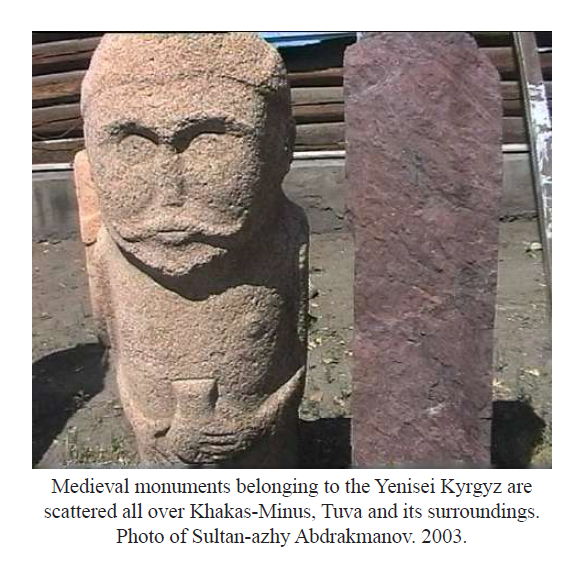
References
- Abdykalykov A. (1968). Yenisei Kirghiz in the XVII century. (Historical essay). Frunze.
- Bakhrushin S. V. (1955). The Yenisei Kirghiz in the XVII century. Scientific works III. Selected works on the history of Siberia XVI-XVII centuries. Part 2. History of the Siberian peoples in the 16th-17th centuries. Moscow: Publishing House of the Academy of Sciences of the USSR, 49 p.
- Butanaev V.Ya., Butanaeva I. I. ( 2001). Khakass historical folklore. Abakan.
- Butanaev V.Ya., Butanaeva I. I. (2003). Enesay Kyrgyz people: folk tales. Kotorgon Karatayev, O. K. -B .: Soros FoundationKyrgyzstan. Bishkek.
- Butanayev V. Ya. (2006). Legend of the great Khakass prince Yerenak. Abakan. Butanaev V. Ya. (2009). History of Khakassia. Course lecture. Abakan.
- Boronin O. V. (2002). Dualism in Siberia XVII 60th of the XIX century. Barnaul.
- Bakhrushin C. B. (1959). Essays on the history of the Krasnoyarsk region in the 17th century. / Scientific Works. T. IV. Moskova.
- Kozmin H. H. (1925). Khakasy. Historical and ethnographic and economic outline of the Minusinsk Territory. Irkutsk. Guzarov V. N. (2012). History of Siberia. Tomsk.
- Chaptykova N. N. (2009). «Kirghiz earth» in the representations of Russian contemporaries of the XVII century. Author’s abstract of Cand. Sc., Sankt-Petersburg.